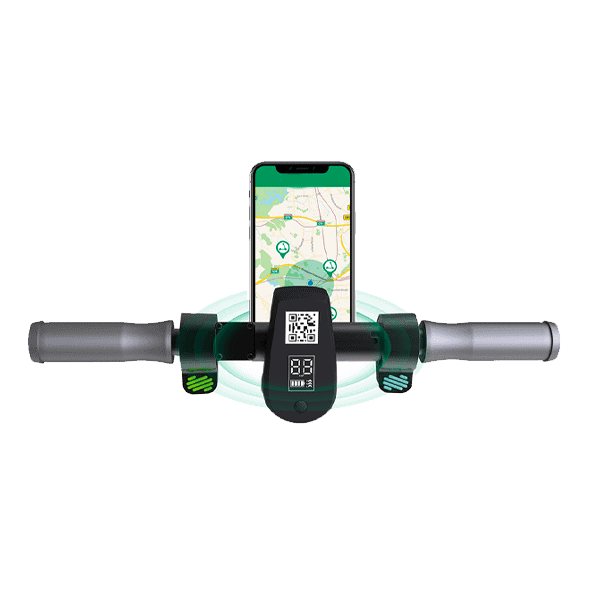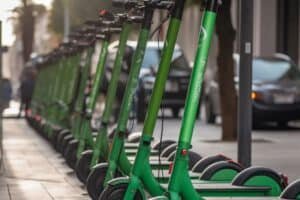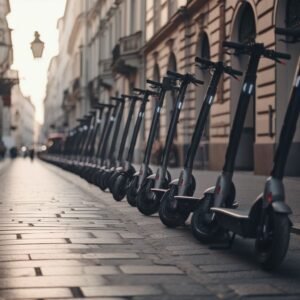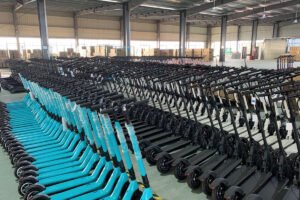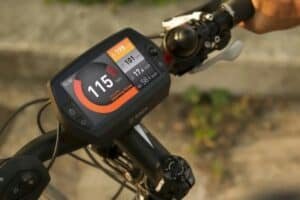No one can deny the importance of Internet of Things (IoT) technology in the rise of “e-transport” as the mode of transportation of the future.
Scooters for shared use have internet access. If the connection isn’t set up right and you can’t talk to the fleet, costs can quickly add up.
What purpose does the Internet of Things hardware serve in the e-scooter itself, and why is it so crucial to the fleet as a whole? The purpose of this piece is to provide an answer to this question.
What exactly is an IoT device in the context of electric scooters?
Sensors that don’t need wires, a cellular modem, a global positioning system, an antenna, a minicomputer, and a subscriber identity module are all components of IoT (Internet of Things) gadgets.
It may be fitted to an electric scooter and turn it into an intelligent gadget that can access the internet.
The IoT device connected to a fleet of scooters can send the location, battery life, and speed of each scooter to a server.
With this feature, you can lock and unlock kick scooters, electric bikes, mopeds, cars, and even more complicated vehicles, turn their lights on and off, and track where they are.
To prevent a loss in your fleet, you must have a fleet that is linked to the cloud through IoT hardware. Most IoT devices will incorporate a GPS module and an antenna to deliver real-time location information on the board.
What role does it play in a fleet of electric scooters?
If the e-scooter has hardware for the Internet of Things, it may transmit the following information:
- Positioning in real-time
- Percentage and status of the battery
- Velocity and direction
- Warnings, such as the scooter being stolen or having fallen over
- Location details — The IoT gathers information about the car to help with fault diagnosis, route planning, and geofencing
Moreover, the scooter’s behavior may be altered by instructions from the server:
- Lock or unlock to begin or finish the journey
- You may locate a scooter’s location with the aid of audible or tactile cues (beeps)
- Limit the scooter’s speed inside a geofenced region by entering a maximum speed in this menu
- Change the ping interval and other parameters in the settings
How does your app interact with the scooter?
For the scooter to function as intended, it must be linked to the same cloud as the software.
To this end, several businesses have aftermarket Internet of Things (IoT) hardware installed in their fleet cars. This, however, considerably complicates the setup.
If you buy a third-party Internet of Things (IoT) gadget and then misconfigure it, it won’t be able to talk to or operate the scooter.
The secret to success lies in setting your Internet of Things device with the appropriate “Scooter Protocol” for the electric scooter you want to use. It’s possible that you’ll need to set up a channel before you can build a device instance for your scooter’s tracker.
To link your fleet with our IoT device, you don’t need to worry about setting up a current scooter protocol; at AuroraElectrico, we already have these protocols in place with several well-known brands of e-scooters with whom we’ve been working for many years.
If the scooter, cloud, and IoT devices were all created by the same company, integrating them would be much easier.
Because of this, we are constantly improving the scooter hardware, and in about a month’s time, you’ll be able to purchase a new electric scooter made just for the sharing market, with high-quality materials and construction that will serve you well in your company.
If you’d like to use our IoT gadget with your own app, we’ll supply a TCP protocol and the necessary technical assistance to make that connection possible.
IoT technology built into your e-scooter and why you need it
Maintaining conformity with current laws
Scooters for rent are electric and are subject to strict regulations in several areas.
For example, e-scooters can only be used on paved roads, riders must follow all traffic laws, and the government keeps an eye on their speeds and how they are used.
IoT-enabled e-scooters make it simpler to enforce regulations by allowing Over-the-air (OTA) firmware upgrades, which may be used to ensure that your e-scooters adhere to the city’s speed limitations.
Setting up designated parking areas
Businesses and organizations may use IoT scooters to ensure that their e-scooters are not taken outside of the municipal limits by their riders. This is accomplished by imposing restrictions on the scooters precisely when a rider enters a restricted area.
And the IoT gadgets can direct the rider to the closest port.
Send city data through the cloud
Even scooter firms may use IoT to provide cities with data like traffic patterns for improved decision-making.
A city may easily exchange data with a company’s scooters without gaining access to all user data by using an IoT cloud platform as a data broker.
AuroraElectrico has been providing IoT hardware for scooters for over 7 years. Because of our 2-meter GPS positioning accuracy and rock-solid functionality, we’ve earned a stellar reputation among fleet owners all over the globe.
Just let us know if your sharing company needs reliable scooters with an Internet of Things device already installed.

